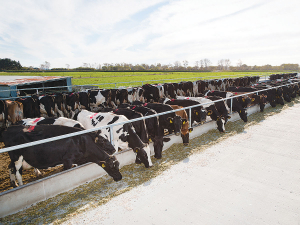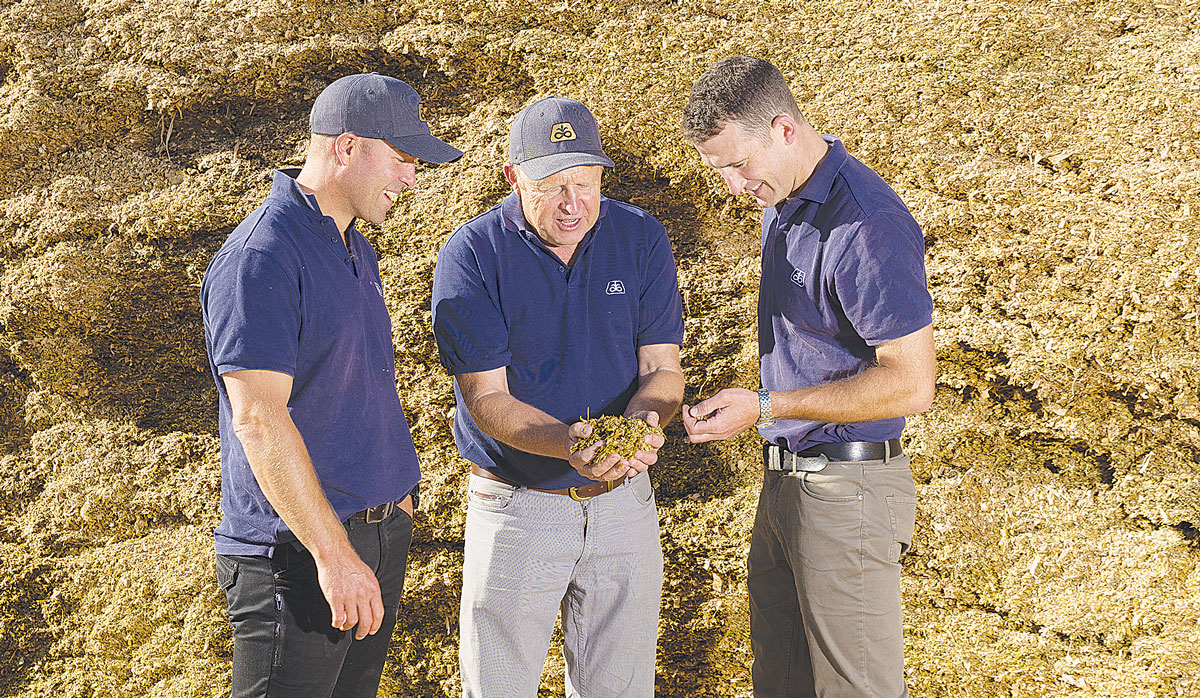Hitting heifer liveweight targets
Early December marks a key transition for many dairy farmers, as weaned replacement heifers head off-farm to grazing.
 Some of the leading farmers used maize silage to manage their pasture and carry more cows to harvest more pasture.
Some of the leading farmers used maize silage to manage their pasture and carry more cows to harvest more pasture.
At the end of this year, and after nearly 25 years working for Pioneer, I will retire.
My colleague Wade Bell will have the privilege of taking over the writing of this column. I have three columns to go before the end of the year and in these I want to cover: Where have we come from? Where are we at now? and Where do we need to be to meet the future challenges?
Where have we come from?
I started working for Pioneer in May 1999. While I knew quite a lot about pasture-based production systems, I knew nothing about maize. I remember standing in a paddock with my boss and a farming couple listening to them talk about maize silage. I had this picture of a mountain in my mind, and I realised that in order to be good at my job, I need to climb very high, very fast.
Over the next three months I read everything there was to read about dairy production systems. Systems research undertaken by Dr Eric Kolver, Dr John Penno, Dr Dave Clark, Kevin MacDonald, Dr John Roche, Arnold Bryant, and Dr Gary Waghorn expanded my understanding of pasture based dairy systems. I visited the few farmers who were using maize silage and learned from them about the strengths and weaknesses of their systems. I also read the limited research there was on maize and maize silage systems in New Zealand. It was very much a ‘learn as you go’ scenario.
In those early days, maize grew well in most of the North Island and some parts of the South Island. It yielded about 17-20 tDM/ha with some crops producing yields in the mid twenty tonne drymatter range. A committed group of farmers were using maize to carry more cows, harvest more pasture and make more milk and more money. Recently released (1998) trial data from the Waimate West Demonstration Farm in Taranaki showed that using maize silage to fill feed deficits in both spring and autumn was highly profitable.
Simple feeding systems, simple decision rules
In many ways, farmers were leading the way as to how and when to feed maize silage profitably. Early on they developed simple systems to efficiently and effectively feed maize silage.
To reduce wastage, some farmers fed their maize silage along fence lines, others used old conveyer belts or pieces of carpet and fed out on those. Some of the leading farmers used maize silage to manage their pasture and carry more cows to harvest more pasture. Jim van der Poel spoke at the Ruakura Farmers Conference and said that on his farm, the person getting the cows out of the paddock determined how much supplements the herd got that day. If the cows left a residual of less than 1,500 kgDM/ha, they got fed more on the feed pad. If residuals were above 1,800 kgDM/ha, they were fed less. Farmers and scientists proved that feeding maize silage in the autumn was very effective at extending lactation, putting weight on cows and building pasture cover going into winter.
 |
|---|
|
From left, Wade Bell, Ian Williams and Matt Dalley inspecting maize silage on a Waikato farm. |
Change in farming systems.
Over the past 25 years I have seen some significant changes in farming practices. When I first started with Pioneer, maize silage was the new feed on the block. Farms were mainly low to medium input. When DairyNZ’s Economic Survey began in 2006, low to medium input farms made up 84% of all farms. Farms have gradually intensified and today the table has turned and medium to high input farms make up 72% of the farms surveyed. The change has been due a number of factors including something I have written about almost every year. The data shows that on average, higher input systems are more profitable than medium to lower input systems.
There is also general recognition that under pressure from pests and changing climate, annual pasture production is declining and has become more seasonally variable. As a result, more supplements have been fed.
Farmers have increased stocking rate and fed their cows better resulting in a 34% rise in per cow and a 43% increase in per hectare production since 2000. More cows per hectare fed better in a static or falling pasture production has meant many more farmers are now feeding more supplements and maize has become an integral part of many farm systems.
Fantastic Farmers
Lastly, I’ve learnt that farmers are an amazing bunch of people. Their ability to adapt is second to none. I’ve loved meeting new people, learning from them and helping them refine their systems. If you’ve been at a meeting where I’ve spoken or invited me onto your farm – thanks. I have appreciated all you have taught me.
Ian Williams is a Pioneer forage specialist. Contact him at This email address is being protected from spambots. You need JavaScript enabled to view it..
Legal controls on the movement of fruits and vegetables are now in place in Auckland’s Mt Roskill suburb, says Biosecurity New Zealand Commissioner North Mike Inglis.
Arable growers worried that some weeds in their crops may have developed herbicide resistance can now get the suspected plants tested for free.
Fruit growers and exporters are worried following the discovery of a male Queensland fruit fly in Auckland this week.
Dairy prices have jumped in the overnight Global Dairy Trade (GDT) auction, breaking a five-month negative streak.
Alliance Group chief executive Willie Wiese is leaving the company after three years in the role.
A booklet produced in 2025 by the Rotoiti 15 trust, Department of Conservation and Scion – now part of the Bioeconomy Science Institute – aims to help people identify insect pests and diseases.
President Donald Trump’s decision to impose tariffs on imports into the US is doing good things for global trade, according…
Seen a giant cheese roll rolling along Southland’s roads?